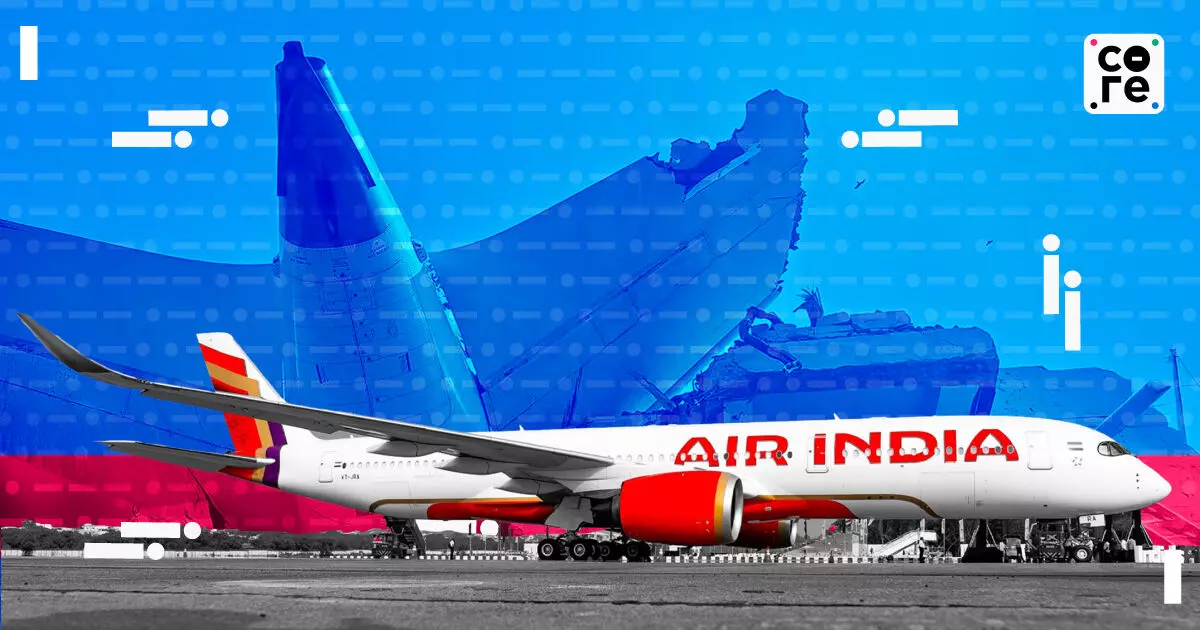
Speculation Swirls, But Air India’s Real Challenge Is Within
Last week’s Air India crash triggered a wave of speculation across social media. We examine the growing internal unrest within Air India and why, even three years after its privatisation, old wounds and cultural rifts continue to simmer beneath the surface.

A pilot friend posted on a common group that the verdict on how the Ahmedabad–London Air India Boeing 787 Dreamliner crashed barely a minute after take-off is already out—at least if you believe the self-styled experts posting on social media or appearing on television channels.
Another set of pilots are convinced it was an equipment failure of some sort, possibly due to maintenance oversight. Many of them believe, quite strongly, that the airline will attempt to cover it up.
Interestingly, some of the pilots expressing that belief are themselves active Air India pilots.
At this point, there isn’t enough information to establish what really happened on the afternoon of June 12, 2025.
At last count, around 270 people have died in what is now one of India’s worst aviation disasters.
The Boeing 787 struck a hostel building in a residential area of Ahmedabad minutes after takeoff, killing 241 people on board and at least 29 on the ground.
One passenger survived.
Meanwhile, so-called aviation experts on YouTube have been dissecting every bit of available video and audio, offering their own analyses, which are now rapidly circulating across social media.
Fast Verdicts, Slow Facts
One pilot and YouTuber, who claims to fly Boeing 777s, initially concluded that pilot error was possible. He clarified that this was just his opinion at the time. A day later, he posted again, noting that the activation of the Ram Air Turbine (RAT) suggested a total power loss, thereby increasing the likelihood of equipment failure and reducing the chance of pilot error.
His disclaimers in both posts don’t really matter in the larger scheme of things.
Views like his eventually coalesce into a larger whirlpool of noise, where expert opinion quickly transitions into “expert theory” in other people’s words.
The media is a key culprit here.
Speaking of which, Air India’s CEO, Campbell Wilson, was reasonably quick to release a video message to the public by 7 PM that same evening.
“Reasonably quick” in the context of how long top management usually takes to stand up and own the situation, even when the cause isn’t yet known.
But the crash and its aftermath reflect the deeper challenges Air India continues to face internally—more than three years after its ownership shifted from the Government of India to the Tata Group.
While most pilots are loyal to their craft and skill rather than to the airline itself, it’s no secret that Air India pilots exhibit a level of disgruntlement that’s unusually high for their profession.
And it’s not just the pilots. Air India’s toxic work culture, created and nurtured over decades of government ownership, had seeped into nearly every department.
At one point, the airline had close to 20 unions of all shapes and sizes, including multiple pilot unions, further split between older and younger pilots.
Much of that has changed in recent years. Air India has been churning staff at a rapid pace since the Tata takeover. This shift is evident both on the ground and in the air.
But many old-timers—including pilots—are still around.
And, unusually, the change in ownership has done little to change their perception of the owner, whether it was the government then or the Tatas now.
Old Wounds Linger
It’s difficult to say from the outside what drives this deep-rooted angst, except to acknowledge that it exists, and at levels that are clearly unhealthy.
This discontent is visible in cockpits too. Not in the way aircraft are flown, but in the complete silence during flights.
I’ve witnessed this myself.
On a 14 hour JFK–Delhi flight two years ago, there wasn’t a single announcement from the cockpit—not before takeoff, nor before landing—times when it is usually customary for the captain to speak.
When I asked a few pilots about this silence, they explained that while there’s no mandatory rule requiring pilots to address passengers, most do—anywhere in the world.
Coming back to the accident, it’s almost certain that the investigation findings will lead to blame being passed around. That’s regardless of where, or on whom, the hammer ultimately lands.
Based on past patterns, we can also expect political involvement and a fresh round of mudslinging as well.
The Tatas clearly realise the sensitivity of the moment.
They’ve already announced a Rs 1 crore ex gratia payment for the families of all those killed, both on board and on the ground, where the aircraft crashed.
There will be other legal liability, mostly.
But no matter what the findings say, the Tatas will now have to lead from the back, so to speak.
Their priority must be to stabilise the rank and file as the airline navigates this incredibly challenging phase.
The external blame game will likely be beyond their control.
But the internal rifts and accumulated stress are not. And unless they get a grip on these issues, the airline cannot truly emerge from this tragic and difficult moment.
How the Tatas handle this phase will hold lessons for business leaders and companies far beyond aviation.
Last week’s Air India crash triggered a wave of speculation across social media. We examine the growing internal unrest within Air India and why, even three years after its privatisation, old wounds and cultural rifts continue to simmer beneath the surface.
Last week’s Air India crash triggered a wave of speculation across social media. We examine the growing internal unrest within Air India and why, even three years after its privatisation, old wounds and cultural rifts continue to simmer beneath the surface.

